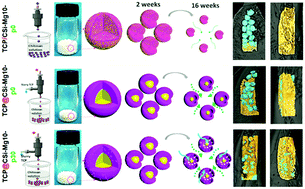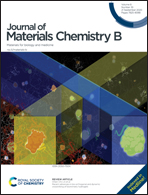Biphasic ceramic biomaterials with tunable spatiotemporal evolution for highly efficient alveolar bone repair
Abstract
Alveolar bone defects, which are characterized by a relatively narrow space and location adjacent to the cementum, require promising substitute biomaterials for their regeneration. In this study, we introduced novel yolk–shell biphasic bio-ceramic granules with/without a customized porous shell and evaluated their biological effect together with structural transformation. Firstly, a self-made coaxial bilayer capillary system was applied for the fabrication of granules. Secondly, thorough morphological and physicochemical characterizations were performed in vitro. Subsequently, the granules were implanted into critical-size alveolar bone defects (10 × 4 × 3 mm) in New Zealand white rabbits, with Bio-Oss® as the positive control. Finally, at 2, 4, 8, and 16 weeks postoperatively, the alveolar bone specimens were harvested and assessed via radiological and histological examination. Our results showed that the yolk–shell biphasic bio-ceramic granules, especially those with porous shells, exhibited a tunable ion release performance, improved biodegradation behavior and satisfactory osteogenesis compared with the homogeneously hybrid and Bio-Oss® granules both in vitro and in vivo. This study provides the first evidence that novel yolk–shell bio-ceramic granules, on account of their adjustable porous microstructure, have great potential in alveolar bone repair.



 Please wait while we load your content...
Please wait while we load your content...